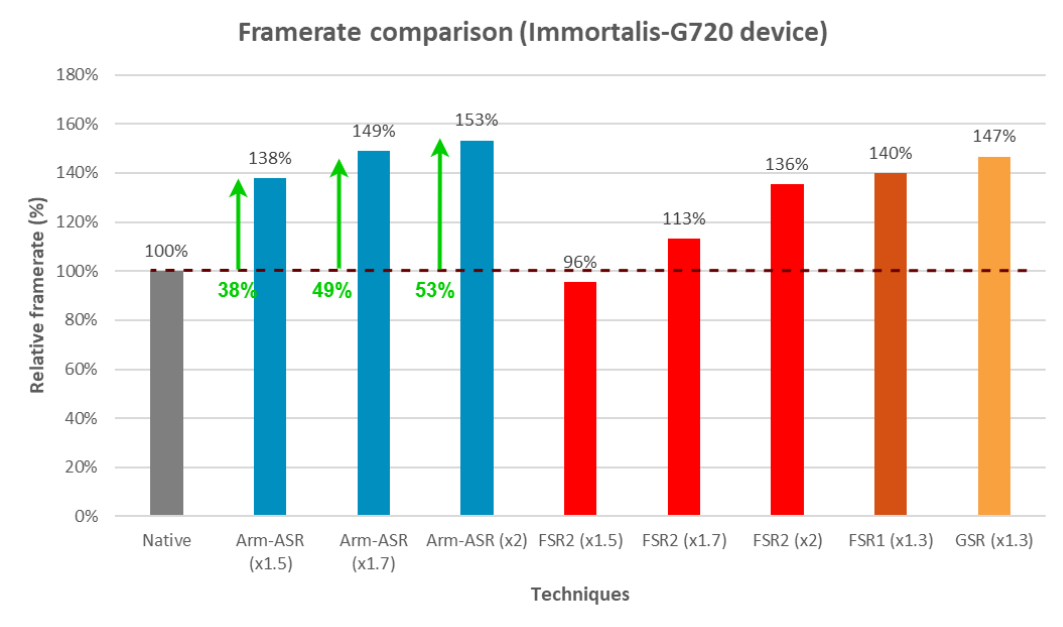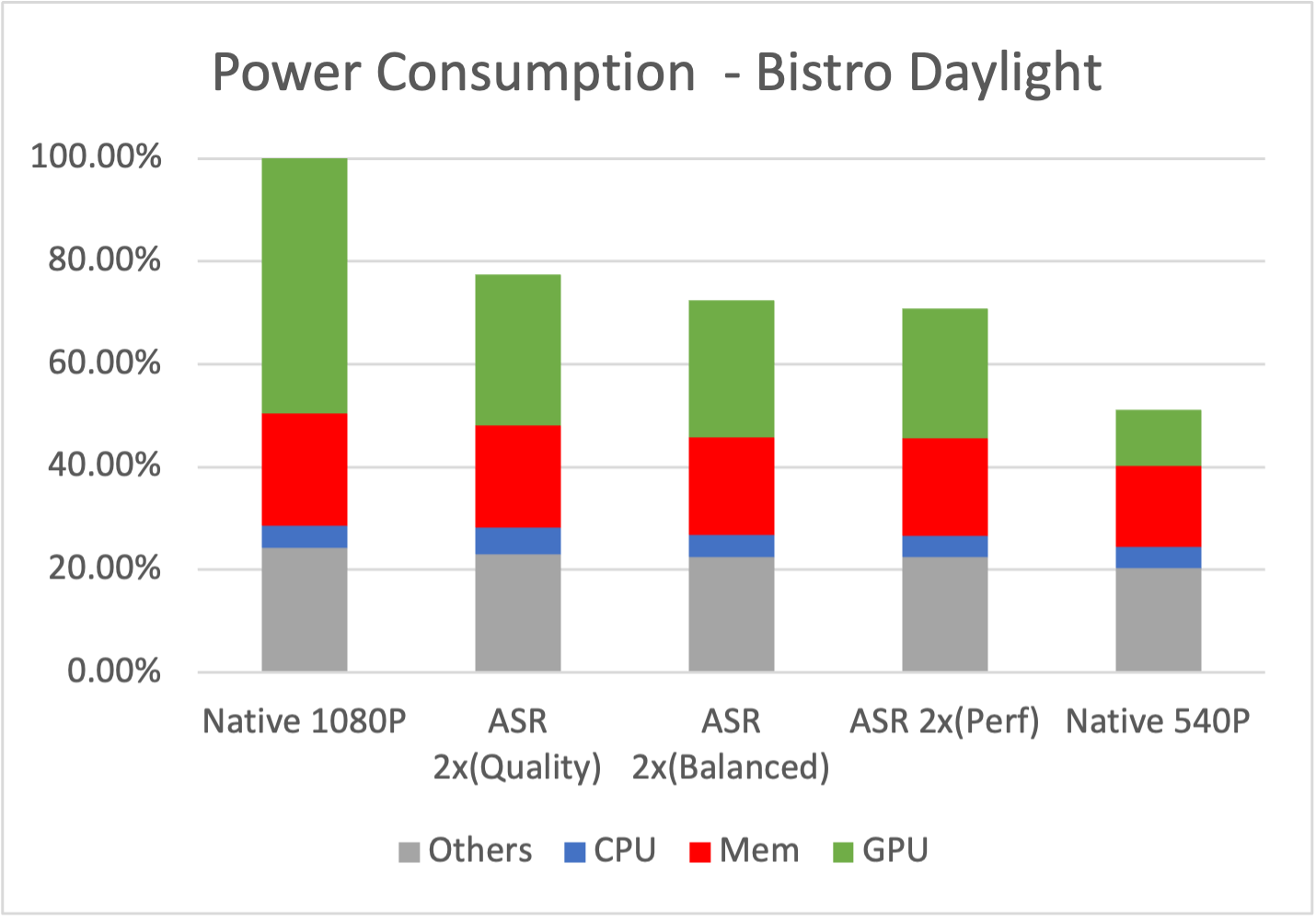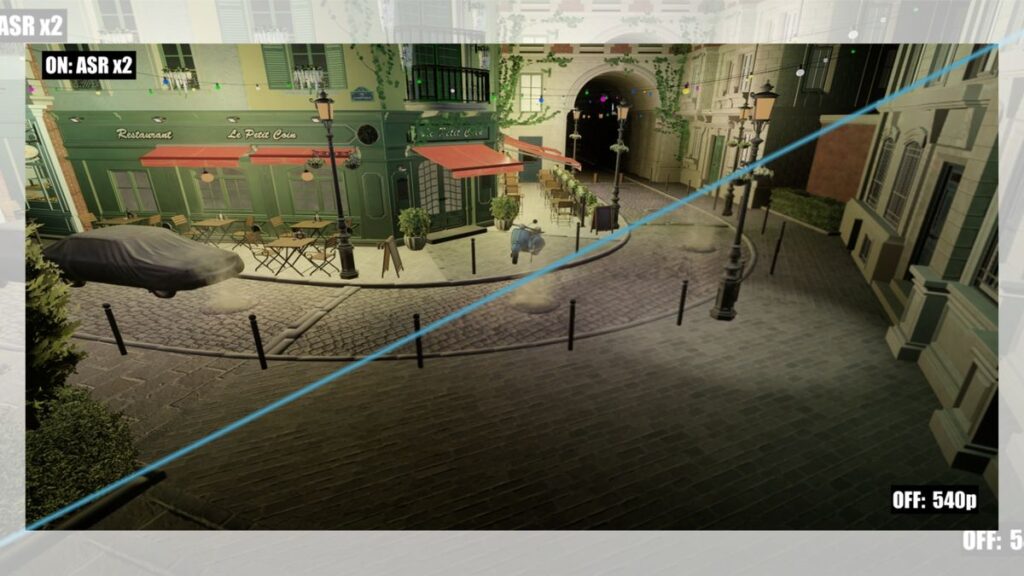Arm has announced its own upscaling technology, Arm Accuracy Super Resolution (Arm ASR), based on AMD's FSR2. Unlike the AMD upscaler, which is primarily built for PCs and high-end consoles, Arm's implementation of the temporal upscaler is focused on mobile applications, allowing the technology to run on lighter devices that require more processing power. The company is also making it available to developers through an open source license, allowing them to implement it in their games without incurring additional licensing costs.
Arm chips have traditionally been found in smartphones and tablets, where upscaling was unnecessary because these devices typically have smaller, lower-resolution screens. But recent advancements are pushing the limits of Arm processors. For example, Apple's M-series chips are pushing the limits of Arm chips in laptops and desktops. They even added a Game Mode to macOS Sonoma, getting more people to game on their MacBooks. And AAA titles that were previously the domain of gaming PCs or full-fledged consoles are now being released for mobile phones.

Because Arm ASR is built specifically for mobile devices, it performs better than AMD FSR2. In Arm's internal testing with an Immortalis-G720 GPU and a resolution of 2,800 x 1,260 pixels, Arm ASR delivered 53 percent more frames with 2x upscaling, compared to 36 percent for FSR2. Arm also tested the technology with MediaTek's Dimensity 9300 chip, where ASR 2x consumed more than 20 percent less power than rendering the scene at native 1080p.
This development is crucial for mobile devices that primarily run on batteries, as it reduces power consumption, allowing users to game for longer periods of time, and it also reduces thermal throttling, preventing smartphones and tablets from getting uncomfortably hot during extended gaming sessions.

This isn't the first upscaling technology designed for phones: Qualcomm previously released its own Snapdragon Game Super Resolution in 2023. However, Qualcomm's solution uses spatial upscaling, which focuses on performance over quality, whereas Arm ASR uses temporal upscaling, which integrates with game engines to offer higher quality at the expense of higher performance requirements.
Arm ASR could also be useful for Microsoft's Copilot+ PCs, especially as the company pushes gaming forward with Windows 11 on Arm. Microsoft unveiled its own spatial upscaling solution with Auto Super Resolution (Auto SR) last May, which doesn't offer the same quality as Arm's solution, but leverages AI technology and the on-device NPU to gain an advantage. Because this requirement uses AI processing, Microsoft is currently limiting it to Copilot+ PCs.
Another benefit Arm ASR brings is that it is familiar to many developers. Because it is based on AMD's FSR2, programmers who have used it before will find Arm ASR's APIs and configuration options familiar and easy to use. And because it is open source, you can simply add it to your project without worrying about license fees. This makes it much easier to implement the technology for cross-platform gaming, allowing users to enjoy and progress with their favorite titles from their desktop PC to their iPhone.

